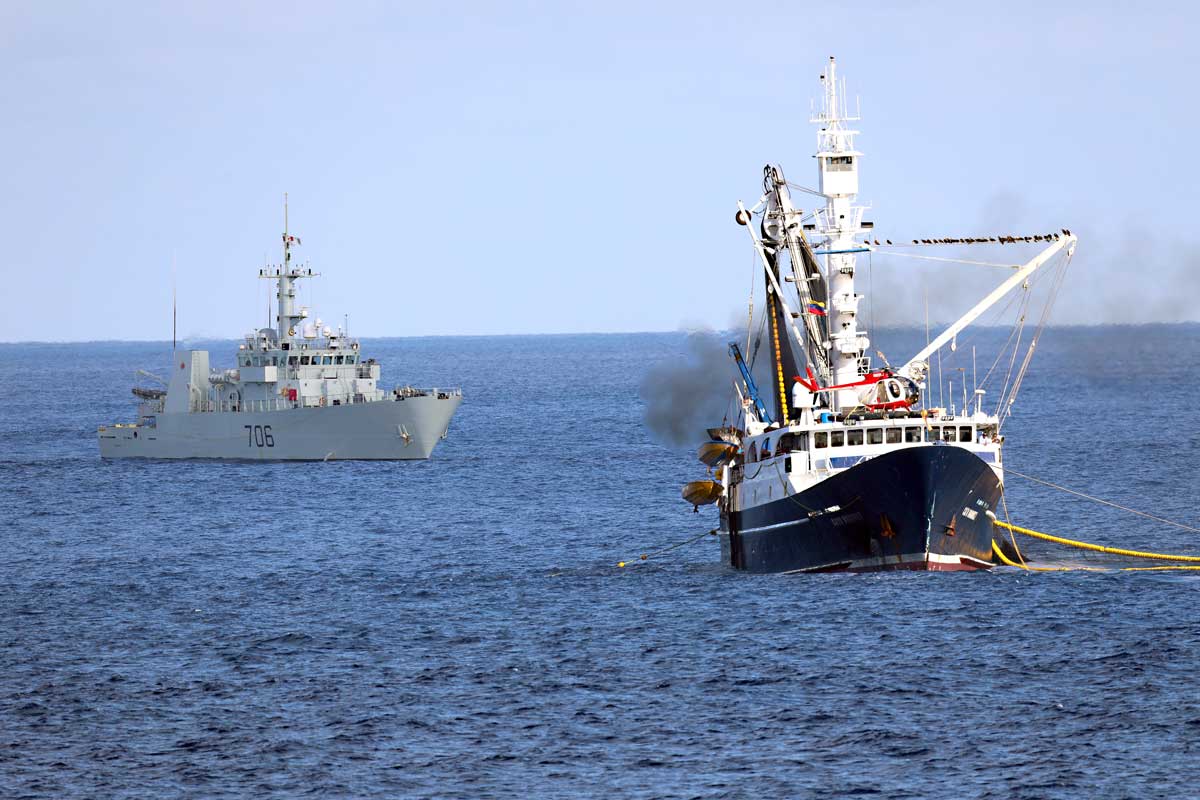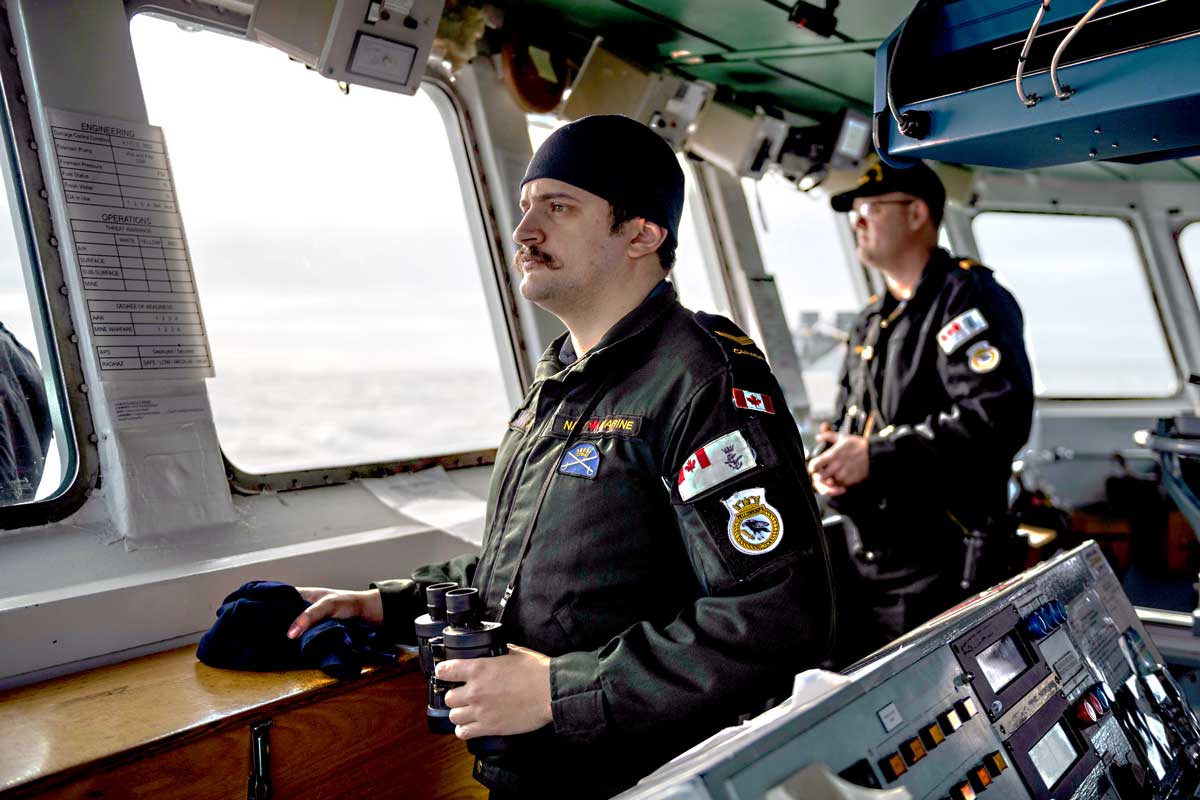HMCS Yellowknife interdicts go-fast – seizes and destroys 800kgs of illicit drugs
By Lookout Production on Apr 11, 2022 with Comments 0

Members of HMCS Yellowknife worked alongside members of the United States Coast Guard Law Enforcement Detachment (LEDET) during a search of a seized go-fast while on Operation Caribbe, March 6. Photo PO1 Richard, U.S. Coast Guard District 11 PAD
HMCS Yellowknife
—
Just two weeks into their deployment on Operation Caribbe, HMCS Yellowknife and crew, with its embarked United States Coast Guard Law Enforcement Detachment (LEDET), interdicted a go-fast vessel carrying approximately 800 kilograms of cocaine.
The operation is Canada’s contribution to the U.S. led enhanced counter-narcotics mission Operation Martillo in the Eastern Pacific Ocean. It involves the Royal Canadian Navy working in coordination with international partners, including the United States, Mexico, and other Central American nations, to search, seize, and destroy illicit narcotics.
On the afternoon of March 6, Yellowknife was vectored toward a target go-fast vessel that was stopped and taking on water. As they approached the search area, a junior lookout on the Gun Deck spotted the target go-fast approximately 8.5 nautical miles away. Yellowknife immediately transitioned from a normal at-sea routine to a sustained all-hands effort.
RHIB coxswains and the LEDET began dressing in their protective gear, and conducted communications checks with the bridge, as other sailors prepared to launch the RHIBs. The cooks jumped into action by preparing food and water for the boarding teams, as these operations often take multiple hours. At every level, the crew were engaged in tasks critical to mission success.
Once the initial boarding of the go-fast was completed, and under the control of the U.S. Coast Guard, the LEDET members began their intensive search of the interior to locate narcotics. A false deck was identified, filled with an estimated 800 kilograms of cocaine. By this time night was fast approaching, which added a layer of difficulty for those involved.
Once the LEDET was satisfied with the amount of evidence collected, the decision was made to sink the go-fast as it posed a hazard to navigation. In order to properly dispose of this hazard, and the remaining narcotics that could not be seized, the decision was made to use plastic explosives to sink the vessel.
In almost complete darkness, members of the Deck Department surveyed the go-fast, taking measurements to ensure the accurate placement of the plastic explosive charges. Once the survey was completed, and the area cleared of marine life, the charges were carefully laid, and then set. The ensuing explosion decimated the go-fast, and turned night into day for a few seconds.
After detonation, the crew surveyed the area to verify no hazards to navigation remained. Once the all-clear was given by the surveyors, Yellowknife returned to patrolling the vast Eastern Pacific Ocean.
Alongside HMCS Saskatoon and partner nations, HMCS Yellowknife and crew remain in the Eastern Pacific, on the hunt to suppress the flow of illicit-narcotics into North and Central America.

A Royal Canadian Navy member stands as bridge lookout aboard Yellowknife. Photo: Canadian Armed Forces.
Filed Under: Top Stories
About the Author:





